It can be really stressful when you’re sitting in the lactation room and you realize that you’re not pumping enough breast milk at work for your baby to eat the next day. Here’s how you can identify what might be causing this, and what adjustments you can make to pump more milk at work.
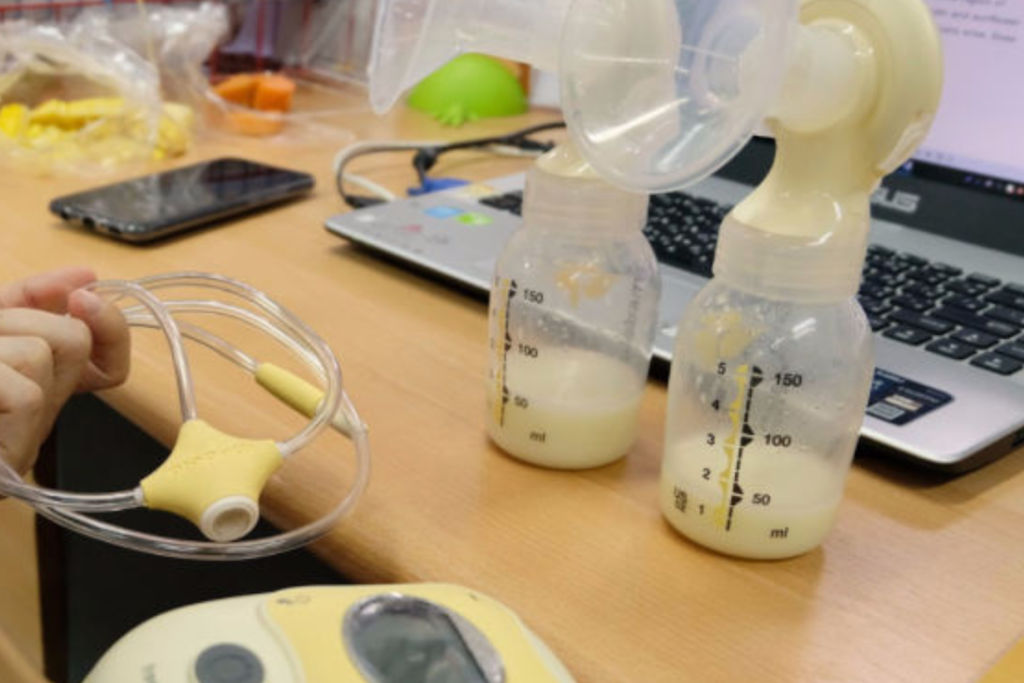
This post may contain affiliate links, which means if you click a link and purchase something, I may make a small commission at no additional cost to you. I only recommend products I love! More information here.
Two common pumping at work milk supply issues
Before you start buying supplements or loading up on nursing teas, there are two things that you should look at in case they are the underlying cause of you not pumping as much as you’d like.
The first is your pumping schedule, and the second is getting your milk to let down quickly (and more than once).
1. Pumping schedule: Are you pumping often enough and for long enough?
It’s important to make sure that you have enough pumping sessions, and that they are the right length.
Removing milk frequently and consistently is the most important thing you can do for your milk supply.
How many times should you pump at work?
This depends on:
- how old your baby is when you go back to work, and
- how long you’ll be at work.
The younger your baby, the more often you may need to pump. Younger babies eat more often than older babies, so you may need to remove milk more often to maintain your supply and avoid clogged ducts.
If your baby is on the younger side (2-6 months), then I would aim to pump three times for 15-20 minutes in a standard 8 hour workday if you can make that work.
If your workday is shorter or longer or your baby is older, you may want to adjust as follows:
- If your workday is shorter than 8 hours, you can adjust down to one or two sessions, depending on how long you’re there.
- If your workday is longer than 8 hours, you may want to pump four times (or more) while you’re at work.
- If your baby is older (6-12+ months), you may be able to do fewer sessions, but I would try to make the total amount of time you spend pumping about the same. So, aim for about 45 minutes to an hour in a 8 hour day, just split among one or two sessions instead of three.
Having a good pumping schedule is key to keeping your milk supply up.

Much more info on pumping schedules at work (including ideas for nurses and teachers) here.
What if you’re too busy to pump at work?
Even if you have a job that makes pumping relatively easy, things can still come up that make pumping difficult.
Maybe your manager schedules you for a meeting at a time that you need to pump. Or maybe you have deadlines and it’s just really hard to get away.
Depending on the situation, you might be able to get a little creative about how you get your pumping sessions in to keep your milk supply up. Here are some ideas:
- If getting away to pump while you work is hard, but you can pump on your commute, try to get longer sessions in on your way to and from work. (Here’s how to do it safely.)
- If you only have 10 minutes to pump, go ahead and pump rather than skip the session completely.
- If you’re in a situation where you aren’t always in the same location and it can be difficult to find a place to pump, bring a hand pump and use that wherever you can get a little privacy.
- If you are in a job where you occasionally have to sit down and work on a laptop, consider whether you can work while you pump using a hands-free pumping bra rather than taking a break.
Hands-Free Pumping Bras
There is only so much you can do, and I don’t mean for this list to push you into feeling guilty for not pumping when it’s impossible. These are just intended to be some creative ideas you can build on if you’re stumped about how to get your pumping sessions in at work.
2. Getting letdowns in a timely fashion
A letdown occurs when your milk ducts release milk from your breasts.
You might have noticed that when you pump, milk dribbles out at first, and then after a few minutes starts to spray. This spraying is called a letdown.
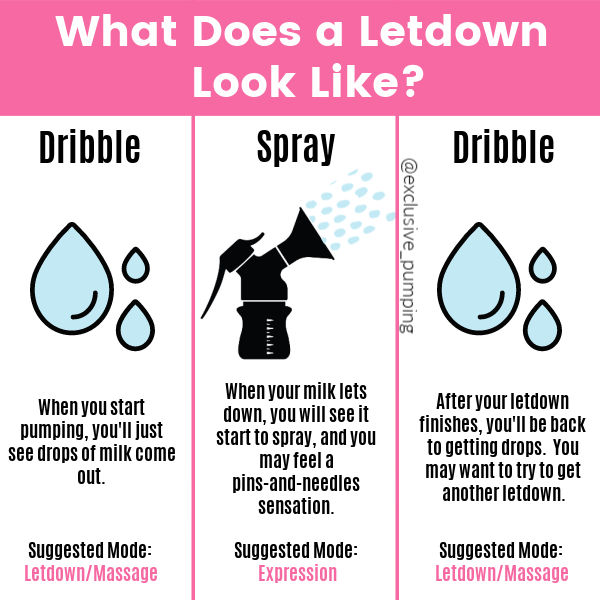
Difficulty with getting letdowns can be one of the biggest issues for moms that pump at work for a few reasons:
First, in many cases, your time is limited because you have to get back to work. This means that the longer it takes you to get a letdown, the shorter the amount of time you have to actually express milk.
Second, letdown is a conditioned response, meaning that it happens when your body experiences the stimuli it normally experiences when you start nursing or pumping.
When you start pumping at work, you aren’t used to pumping in that environment. Additionally, if you are a nursing mom (as opposed to an exclusive pumper), you may be conditioned to let down in response to your baby rather than to your breast pump.
How to get a letdown faster
So how to get a letdown more quickly, so that you don’t spend all of your time in the lactation room trying to get one? A few things that you can experiment with are:
- Try using a warm compress before you pump, as heat tends to helps stimulate letdowns.
- See if vibration helps you get a letdown. You can try it with an electric toothbrush to see if that works for you, and if so, consider investing in a lactation massager.*
- Relax as much as possible and try to get yourself as comfortable as possible. Stress can inhibit letdowns, so try to go to your happy place while you pump. Listen to music you like on some headphones, bring a blanket if it’s cold in the lactation room, etc. If you tend to get concerned about the amount that you pump, consider covering the bottles with a nursing cover or baby sock so you can’t see them.
If you are a nursing mom, you can also try looking at a video of your baby or maybe bring in something that smells like your baby, and see if that helps.
(*Note: LaVie makes two lactation massagers – a smaller one with just vibration and a warming massager that has heat AND vibration. They are both super helpful – use the code EPUMP on their website for 10% off!)
Getting a second letdown
Depending on how long you have to pump, you may be able to get a second letdown. (I found that I usually got 1-2 letdowns in a 15 minute pumping session, and 2-3 in a 20-30 minute one.)
What is a second letdown? After a while you might notice that the milk stops spraying and returns to a dribble – but that doesn’t mean there’s no more milk in your breasts or that you’re “empty”! If you keep pumping for a bit, or stop and start again, your milk might let down again. I usually found that I got about 1/4-1/2 of what I had pumped in my first letdown in my second letdown.
So, when your milk stops spraying, if you have time, consider putting your breast pump back in letdown/massage mode for 5 minutes or so and see if your milk starts spraying again. (If it does, switch it back to expression mode to maximize the amount you pump.)
Pumping for a little longer – after you thought you were empty – can make a big difference in how much you pump at work.
Ways to pump more milk at work
What if neither of these is the underlying issue? If you’re not having any issues getting your pumping sessions in and you’re able to get your milk to letdown quickly, here are a few other things that you can try.
Replace your pump parts
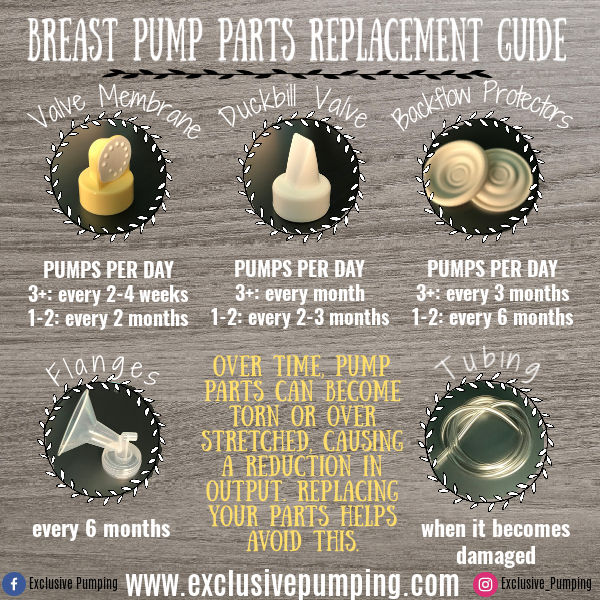
If you’ve been back at work for awhile and haven’t replaced your pump parts, try doing that.
More information on how often each part needs to be replaced is available here, but the most important piece is the valve membrane or duckbill valve.
I have been shocked at the difference a new valve can make it suction – often the loss of suction is so gradual that you don’t realize it’s happening until you replace it.
Try hand expression
If you mostly nurse your baby and he has been growing just fine – but you’re not pumping enough at work – the issue is often not your supply, but how your body is responding to the pump.
To test this out, try hand expression when you have some free time, and see if you’re able to get more milk that way.
If you are, you could add hand expression to your routine at work to see if it helps you get more overall. For example, you might find that pumping for 10 minutes and then hand expressing for 5 minutes works well for you.
If you have a manual pump, you can also try that in addition to hand expression. Some women seem to have more luck with these pumps than electric pumps.
Breast compressions
While you pump, do “hands-on pumping,” or breast compressions.
Breast compressions just mean moving your hands around your breast while you pump and squeezing or massaging the milk out of your milk ducts. This makes pumping faster and more effective, and can help you get more milk quickly.
Eat oatmeal
While there’s no research about this, and no one knows exactly WHY it works, many women have found that they are able to pump a few extra ounces when they eat oatmeal for breakfast.
(I did an experiment on myself once and it worked for me; I also did an unscientific poll on instagram and 62% of women thought it helped them.)
Any kind of oatmeal will work. If you don’t like the taste of normal oatmeal (I don’t) you can try overnight oats.
Need Help Going Back to Work? Use EPUMP30 for 30% off!
Nursing teas and supplements
You can also try drinking nursing teas or taking supplements in order to increase your milk supply.
Here are some ideas for things that you can try.
(Legendairy Milk reached out to me and gave me a 15% off discount code for any of their supplements – use 15EPUMP for 15% off!)
How much breast milk do you need to pump at work?
The amount that a baby will take while you’re at work varies considerably.
Here’s an (obviously unscientific) poll that I did on Instagram that shows that there’s no right answer to this question:
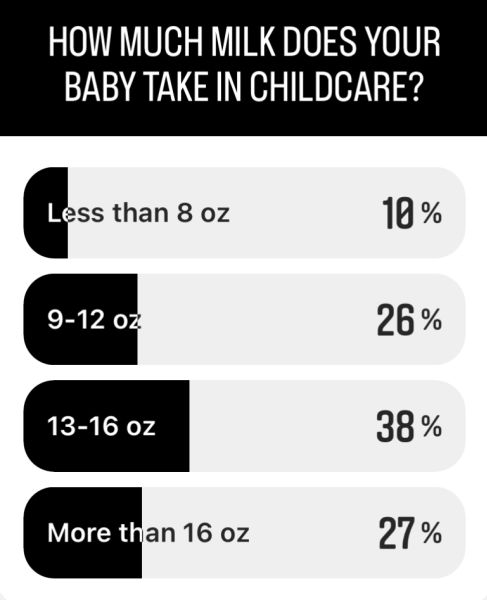
Personally, I generally brought in four 4-5oz bottles and sometimes got one bottle back, meaning that my baby took 12-20 oz while I was away. This is a wide range, but a lot really depends on the baby, whether they are eating solids, whether they are waking up at night to eat, etc.
It’s not uncommon for working moms to be a little shocked with how much milk their baby is taking at daycare compared to how much they pump. It can be stressful to try to keep up.
One thing you could consider is asking your childcare provider if they are familiar with paced bottle feeding and providing them with information about it, as it might help with this issue.
I hope this information is helpful when you’re not pumping enough at work. Let us know if you have any other tips or questions in the comments!
Nervous about pumping at work? Want help building your freezer stash, creating a packing checklist, and putting together a pumping schedule? Check out my Ultimate Pumping at Work Workbook here! Use EPUMP30 for 30% off.
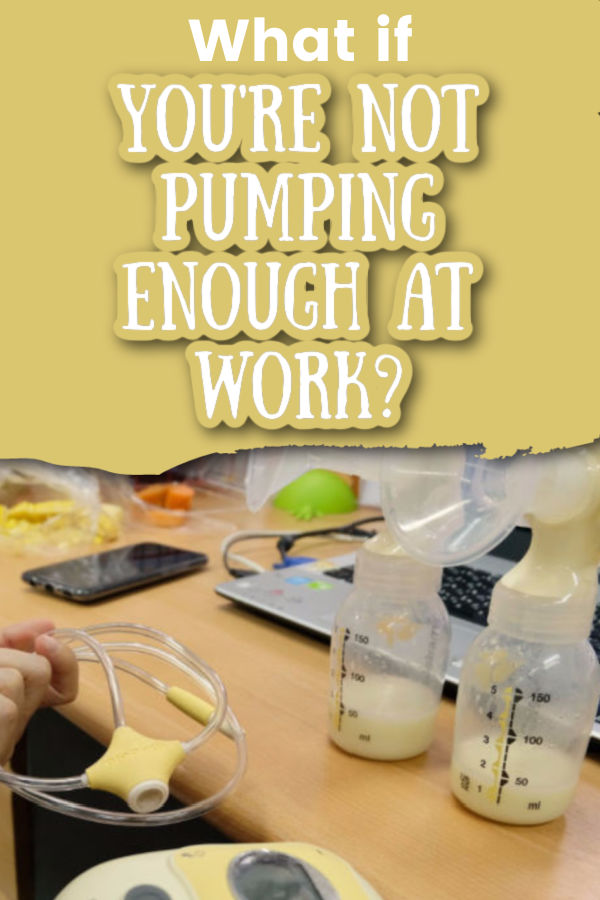
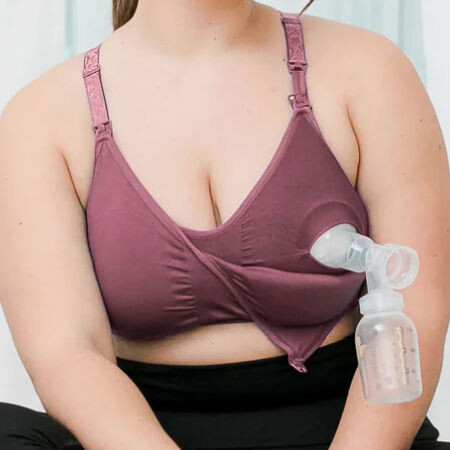
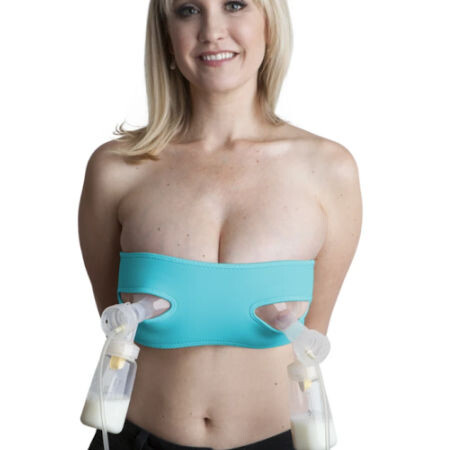


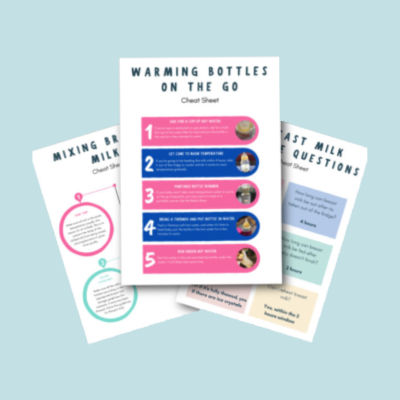
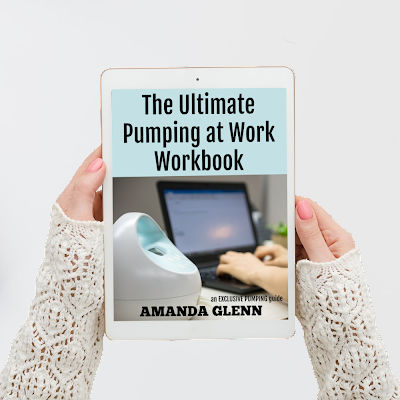

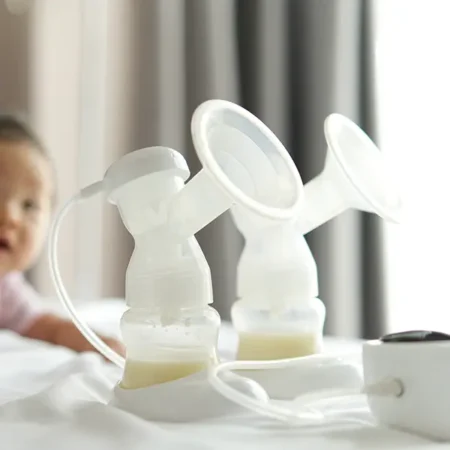













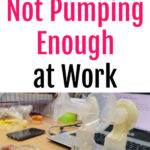
Leave A Reply!